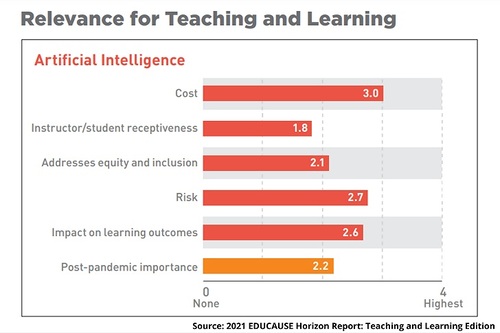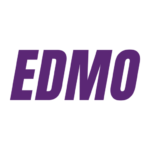Artificial Intelligence has penetrated all sectors and higher education is no exception to this technological transformation. Its ubiquity is reflected in the multiple ways the technology is being used to revolutionize the sector. AI is touted to hold potential to address the varied challenges in the education sector today and speed up progress towards Sustainable Development Goals 4. Experts predict that by 2025, the AI market in education will reach $6 billion, underscoring the growing trend of embracing AI technologies in schools and universities.
AI’s pronounced prominence is exhibited in the conviction showcased by international organizations like UNESCO in its potential to transform education. The international body has developed within the framework of the Beijing Consensus a publication with an objective to foster readiness to employ AI among education policy-makers. It intends to build a shared understanding of the educational possibilities and challenges offered by AI and to instill an understanding of its implications for the core competencies needed in the AI era.
Demystifying AI
Artificial Intelligence endeavors to create machines that help accomplish tasks that were previously only achievable through human or biological cognition. The technology offers huge potential for universities across the globe to offload time-intensive administrative and academic work, enhance the potency of IT processes, boost enrollment in times of uncertainty and deliver better learning outcomes for students.
AI can be leveraged in multiple ways to revolutionize the education sector. From education management and delivery to learning and assessment, AI can facilitate a lot of processes. The use of AI in education management and delivery has grown exponentially over the past few years. A lot of institutions have already adopted AI technologies to enhance data collection and processing, making education management and provision more equitable, inclusive, open, and personalized.
Benefits of AI in education for students
The introduction of AI in education does not entail the replacement of human faculty, but enhancement of learning experience by providing swift, technological assistance to human teachers. To put it simply, AI is an extension of human intelligence. With the help of this disruptive technology, institutions the world over are able to customize the experience of not only the learners but also the teachers. AI’s benefits in education are immense and have the potential to optimize both learning and teaching. Here is how AI is assisting students to learn better-
- Personalized learning: The application of AI in education has greatly enhanced personalized learning for students. The homogeneous environment followed for centuries in traditional classrooms doesn’t factor in the individual pace, knowledge, and goals of the students. However, with AI, the learning experience of individual students is curated to fit their level of knowledge and speed of learning. Further, AI-powered systems can examine students’ previous learning histories, detect shortcomings, and recommend courses that will help them develop, allowing for a highly individualized learning experience.
- 24/7 access to learning: AI makes education approachable and accessible to everyone around the world. Unlike traditional teaching methods that might cater to a certain band of students and leave others owing to paucity of adequate training and resources, for example, the needs of students with disabilities, AI can be trained to work with exceptions. However, access to AI-enabled learning is subject to socio-economic privilege, but with inclusive policies aiming towards universalization, governments globally are trying to bridge this gap and provide all students with top-notch learning resources.
- Quick Response: One of the biggest advantages of AI in education is that students don’t have to wait for long periods of time to get responses to their questions. AI-enabled learning can help students get quick answers to their most commonly asked questions with the help of support automation and conversational intelligence. This helps students save up on time as they don’t have to wait on their teachers to reply to their queries or spend time tracking down the answers.
How AI is transforming Higher Education
AI is making a significant impact on higher education, with institutions of all sizes leveraging it to improve student outcomes. By utilizing data-driven AI tools, universities are better predicting enrollment trends and enhancing their recruitment and retention strategies. For instance, Georgia State University trialed an AI chatbot to address incoming students’ specific concerns and ensure they were on track with university onboarding. This initiative helped reduce “summer melt,” where accepted students fail to enroll in the fall, by 3.3 percentage points. Similarly, Durham University in the UK uses Holly, an AI-powered student engagement platform, to support student success throughout the admissions process.

Several reputable higher education institutions around the world are utilizinA
The recent discourse about AI and higher education uplifts the potential of AI to tackle current challenges in teaching, learning, and student success and offers the opportunity to recalibrate our academic programs in ways that will better serve “Generation AI.”

Artificial intelligence has certainly opened the floodgates of possibilities and opportunities for recalibration and improvement on multiple fronts for higher education institutions. However, educational technologists are frisking for ethical challenges that may accompany this technological transformation. To better understand the ethical and legal challenges brought about by the use of AI in higher education, the University of Stockholm has started a project primarily focusing on predictive analytics. Among the several objectives that the project wants to accomplish, the ambition to evolve general knowledge on how to engage with the ethical and legal challenges related to the use of AI in higher education from the ground up, and to design a “Swedish Observatory for Responsible AI in Education” that will help raise awareness towards responsible use of AI in higher education hold primary importance.

The future of AI in Higher Education: Promises and perils
Research and literature are brimming with assertions about how leveraging AI can be a game-changer for higher education institutions. Its efficiency and efficacy have been captured and reflected in its ability to acquire different data at the most granular level in real-time. This cutting-edge technology has the ability to examine a large number of students, whether in the classroom or during the application process. Thus, AI broadens the scope of possibilities in higher education by overcoming the constraints of human cognition and the difficulty of dealing with several students or a large amount of data at the same time.
The potential to analyze and cater to several students stands as a huge assurance to equality, a long-envisioned dream in education. It brings with it the promise of better-quality education to sans their geographical location. At a macro level, AI can prove beneficial in improving the pedagogy to adapt to individual needs as well as for learning in general.
Touted as a pivotal technology, AI can be a force for good. It does, however, come with some risks. Like the risk of adverse outcomes due to data concerns (such as data being outdated), or that of focusing on a certain segment of the population that may not match the desired student group.
Another factor that undermines AI’s appeal in higher education is the issue of its comprehensiveness and inclusion. Biases have historically plagued technology. For example, the facial recognition software employed by IT behemoths such as Microsoft, Google, and IBM detects light-skinned men more accurately than light-skinned women or darker-skinned men.
Key Takeaways
Artificial intelligence is a promising technological innovation driven by humans for humans. As has been stated oftentimes in various discussions, its potential to bridge the skill gap, promote equality in education, and provide personalized and easy access to learning is enormous. Higher education institutions all around the world are jumping on the AI bandwagon to stay ahead of the competition and tap into the student reservoir from the application and enrollment stage to the learning and engagement stage. The future is being designed, and while we humans will be in charge, AI will be at the forefront of executing all that was previously accomplished via human capacity by going that extra mile that was not conceivable through human cognition.

Also Read:
9 ways to optimize student acquisition effectively
California State University – Channel Islands partners with EDMO to boost their student recruitment







